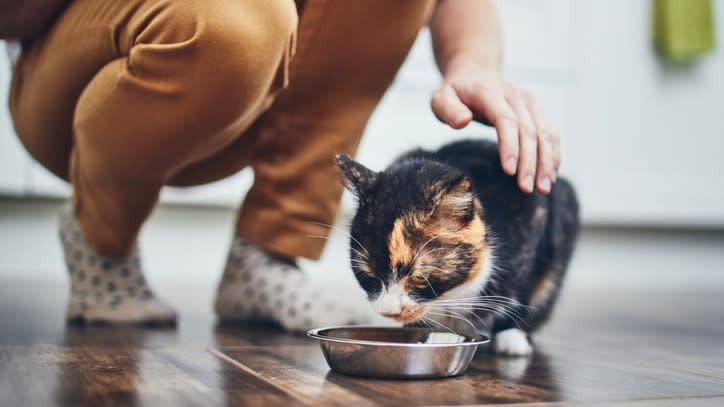As a cat owner, you want to provide your feline friend with the best possible nutrition. High-quality cat food delivers essential vitamins, minerals, and nutrients for optimal health. However, like any food product, cat food can go bad. Knowing how to properly store cat food and recognize signs of spoilage is crucial to ensure your cat’s safety and well-being.
How to Tell if Cat Food Has Gone Bad
The first thing you should always do is check the expiration date on the cat food bag or can. Both wet and dry cat food have expiration dates, and after this date the food’s quality will decline. Here are some other things to consider:
- Expiration Date: Discard any wet or dry cat food that has passed its expiration date.
- Changes in Smell, Texture, or Appearance: If you notice a change in the food’s smell, texture, or appearance, it’s likely spoiled. The oils in the food can break down, causing a rancid odor or a change in consistency.
- Mold or Bugs: Inspect the packaging for signs of mold or bugs, especially if it’s biodegradable.
- Cat’s Behavior: Pay attention to your cat’s eating habits. If your cat’s not eating, it could indicate that the food has gone bad, although refusal to eat can also indicate illness, so it’s important to schedule a vet visit if your cat is not eating!
How Long Does Cat Food Last?
The shelf life of cat food depends on several factors, including the brand, type of food (wet or dry), packaging, and storage conditions.
Wet Cat Food
- Unopened: Unopened wet cat food can last anywhere from four months to three years.
- Opened: Once opened, wet cat food should be sealed, refrigerated, and used within five to seven days. Do not leave wet food at room temperature for more than four hours, as it can quickly spoil.
Dry Cat Food
- Unopened: Dry cat food typically lasts for six months to a year from the manufacture date if unopened.
- Opened: Once opened, dry cat food should be used within 14 to 21 days for optimal freshness.
Is Expired Cat Food Safe for Your Cat?
Even if there are no visible signs of spoilage, feeding your cat expired food is not recommended. Expired cat food may have diminished nutritional value and an increased risk of bacterial contamination. Consuming spoiled food can lead to nutrient deficiencies, diarrhea in cats, nausea, and an upset stomach. It’s always best to err on the side of caution and discard expired cat food.
Tips for Keeping Cat Food Fresh
Proper storage is essential for maintaining the quality and safety of your cat’s food. Here are some tips for storing wet and dry cat food:
Dry Cat Food Storage Tips
- Seal the Bag: Ensure the food bag is properly sealed and in good condition.
- Airtight Container: Store the original food package in an airtight container, such as a glass jar or metal container. If using plastic containers, choose high-quality, food-grade plastic and replace them regularly.
- Cool, Dry Place: Store the food container in a cool, dry place with a temperature below 80 degrees Fahrenheit (26.6 degrees Celsius). Avoid storing food on the floor or in humid environments like the garage or basement.
- Original Container: Keep the food in its original container whenever possible. If you transfer it, save the label or record the manufacture date, brand details, expiration date, and the date it was opened or stored.
- Wash Regularly: Wash the container between uses to prevent contamination.
- Freezing: Dry cat food can be stored in the freezer for up to six months in an airtight container, such as a freezer-safe Ziploc bag, plastic container, or lidded glassware.
Wet Cat Food Storage Tips
- Temperature: Store unopened cans of wet cat food at a temperature between 50 and 100 degrees Fahrenheit (10 to 37.7 degrees Celsius).
- Refrigeration: Once opened, cover and refrigerate wet cat food immediately.
- Sealed Containers: Seal opened cans with a plastic pet food lid, zippered disposable bags, or covered bowls or plates in the fridge.
- Refrigeration Time: Opened cans should be kept in the fridge for five to seven days.
- Room Temperature: Bowls of wet cat food should only be left out for up to four hours at room temperature.
- Freezing: Do not freeze unopened cans.
- Labeling: Label all food carefully with the date it was opened.
By following these storage tips and being mindful of expiration dates, you can help ensure your cat’s food remains fresh, nutritious, and safe for consumption. Prioritizing proper cat food storage is a simple yet effective way to protect your cat’s health and well-being.
